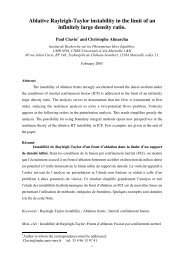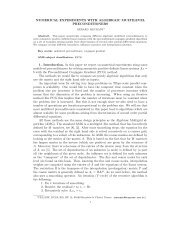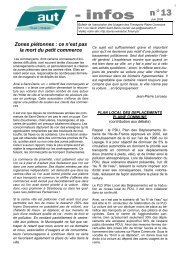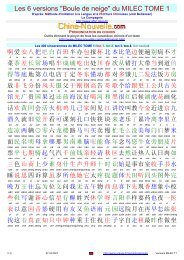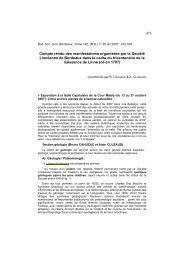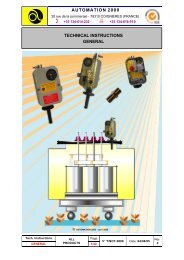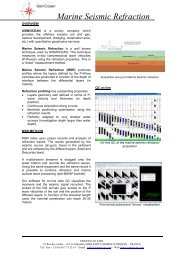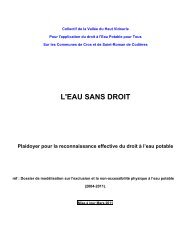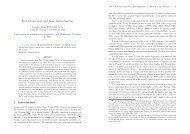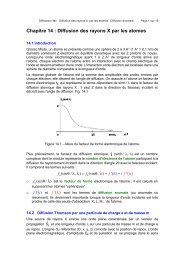Advanced Life Support Research and Technology Development Metric
Advanced Life Support Research and Technology Development Metric
Advanced Life Support Research and Technology Development Metric
Create successful ePaper yourself
Turn your PDF publications into a flip-book with our unique Google optimized e-Paper software.
Breakdown of ISS ECLSS Equivalent System Mass Components by SystemSystemAssumedMass[kg]ResupplyMass[kg/yr]AssumedVolume[m³]ResupplyVolume[m³/yr]AveragePower[kW]AverageCooling[kW]Crew Time[per•hr/yr]Percentageof TotalECLSSESM[kg ESM]Air 1,233.5 385.6 201.657 0.562 4.73 4.73 11.5 19,567 13.2%Clothing 0 4,114.5 0 3.857 0 0 0 43,717 29.6%Food 0 5,708.6 0 0 1.61 1.61 0 57,291 38.7%Waste 0%Water 797.0 1,772.0 0 5.542 0.49 0.49 80.0 22,674 15.3%Other 0 0 69.230 0 0.25 0 0 4,637 3.1%<strong>Advanced</strong> <strong>Life</strong> <strong>Support</strong> System <strong>Technology</strong> BaselineThe ALSS technology baseline is an example of an ALS Program LSS fromJohnson Space Center (Lin, 1997), with additional components added for completeness<strong>and</strong> comparability to the ISS case. The selections presented in this particular baselinearose from a preliminary study of a life support configuration for a transit vehicle for amission to Mars using a TransHab-style inflatable structure for the crew module. Theunderlying reference mission, which differs from the DRM <strong>and</strong> the reference mission forthe <strong>Metric</strong>, assumed a single vehicle would transport the crew from Earth orbit to Mars<strong>and</strong> then back to Earth again. Separate vehicles would transfer the crew to the surface ofMars <strong>and</strong> provide a habitat once there. As such, the technology selection process did notconsider surface operations. While systems designed to function in microgravity generallyare not gravity sensitive <strong>and</strong> will function on a planetary surface, overall such anequipment selection may not be optimal. Finally, because the systems included are underdevelopment <strong>and</strong> not flight-ready, the physical attributes are less precise than the valuesfor the USOS equipment. Thus, the ALSS baseline should be considered representative,but not necessarily optimal, for the reference mission.Thus, the ALSS case is extrapolated from ALS Program values developed atJohnson Space Center. The original ALSS values (Lin, 1997) have been updated withmore recent values (Hanford, 1998) where possible. The ALSS here is primarily aphysicochemical system with a biological primary water processor <strong>and</strong> very limitedbiological food production. The system is defined in detail in the tables below. Itrepresents an advance over ISS technology, <strong>and</strong> is for a 400-day outbound <strong>and</strong> returntransit. As noted above, similar technology should work on the surface, <strong>and</strong> should beindependent of the mission scenario. This scenario does include a small plant growthchamber. The mass allocated is 120 kg. This is adequate for about a half square metergrowing area. Half a square meter could produce as much as 1% of the food for the crewwith a high productivity cereal crop, or as low as 0.1% for a low productivity crop.Food, clothes, <strong>and</strong> laundry are not covered by these references, <strong>and</strong> have beenadded. These masses are large compared to other equipment. Nevertheless, these itemswill be important issues when comparisons to bioregenerative options are eventuallyundertaken. Radiation protection could also be an issue when considering transit vehicles,but it can be ignored as a first approximation.Food cost is taken from Hanford (1997). This value is 12% lighter than the figureused for ISS technology case. This is reasonable assuming a greater use of dehydratedfood for longer-duration trips <strong>and</strong> the availability of a small quantity of fresh food.




